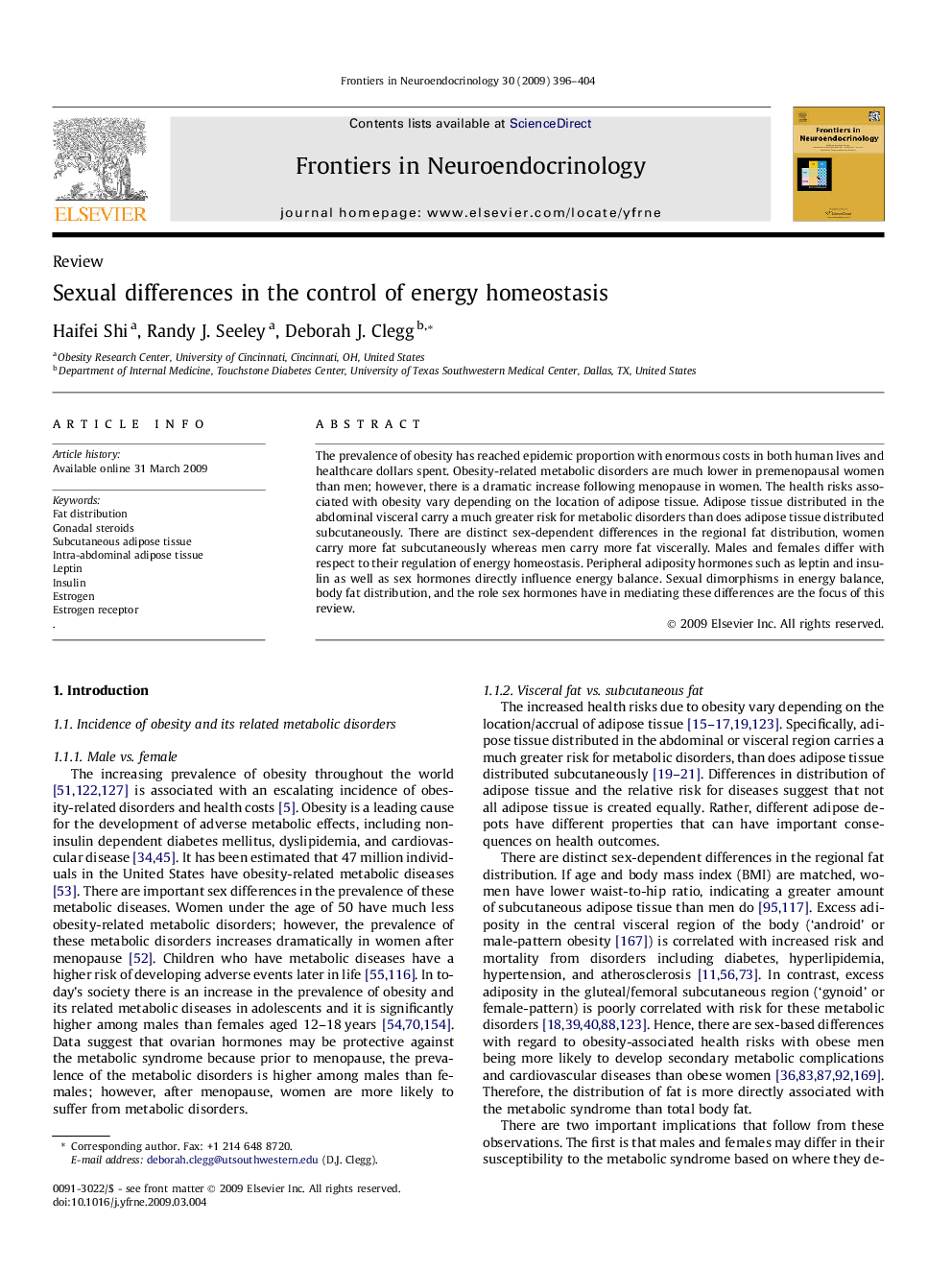| Article ID | Journal | Published Year | Pages | File Type |
|---|---|---|---|---|
| 2799505 | Frontiers in Neuroendocrinology | 2009 | 9 Pages |
The prevalence of obesity has reached epidemic proportion with enormous costs in both human lives and healthcare dollars spent. Obesity-related metabolic disorders are much lower in premenopausal women than men; however, there is a dramatic increase following menopause in women. The health risks associated with obesity vary depending on the location of adipose tissue. Adipose tissue distributed in the abdominal visceral carry a much greater risk for metabolic disorders than does adipose tissue distributed subcutaneously. There are distinct sex-dependent differences in the regional fat distribution, women carry more fat subcutaneously whereas men carry more fat viscerally. Males and females differ with respect to their regulation of energy homeostasis. Peripheral adiposity hormones such as leptin and insulin as well as sex hormones directly influence energy balance. Sexual dimorphisms in energy balance, body fat distribution, and the role sex hormones have in mediating these differences are the focus of this review.
